THD definition
For a signal y, the total harmonic distortion (THD) is defined by the equation:
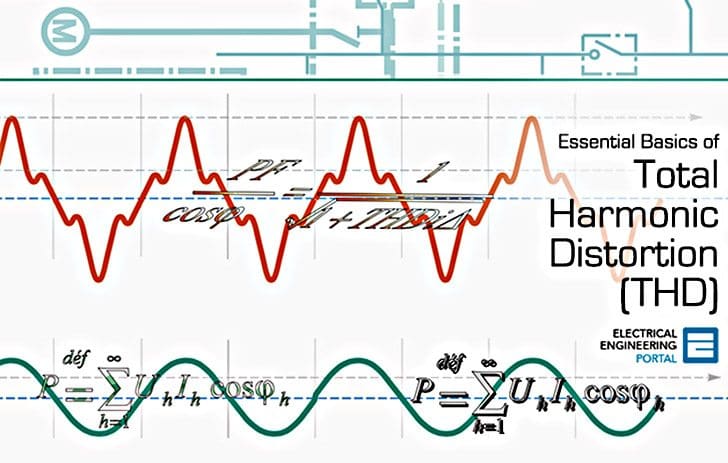
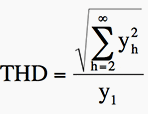

This definition complies with that of standard IEC 61000-2-2.
Note that the resulting value may exceed one. According to the standard, h can generally be limited to 50. This equation produces a single value indicating the distortion of a voltage or a current flowing at a given point in a distribution system. Harmonic distortion is generally expressed as a percentage.
Current and voltage THD
When dealing with current harmonics, the equation becomes:
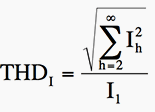

The above equation is equivalent to the one below, which is more direct and easier to use when the total rms value is known:


When dealing with voltage harmonics, the equation becomes:
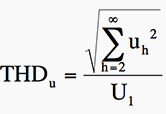

Total harmonic factor (THF)
In certain countries with different work habits, a different equation is used to determine harmonic distortion. In this equation, the value of the fundamental voltage U1 or the fundamental current I1 is replaced by the rms values Urms and Irms respectively.
To distinguish between the two equations, we will call the second the total harmonic factor (THF). Example of a voltage THF:


What is more, it not well suited to highly distorted signals because it cannot exceed the value of 100%, contrary to the THD defined at the beginning of this technical article.
Importance of Mitigating THD
While there is no national standard dictating THD limits on systems, there are recommended values for acceptable harmonic distortion. IEEE Std 519, “RECOMMENDED PRACTICES AND REQUIREMENTS FOR HARMONIC CONTROL IN ELECTRICAL POWER SYSTEMS” provides suggested harmonic values for power systems:
Higher levels of harmonics result in erratic, sometimes subtle, malfunctions of the equipment that can, in some cases, have serious consequences.
The limits on voltage harmonics are thus set at 5% for THD and 3% for any single harmonic. It is important to note that the suggestions and values given in this standard are purely voluntary.
However, keeping low THD values on a system will further ensure proper operation of equipment and a longer equipment life span.
Harmonics: What are they, why do I care, how do I solve?
Low Voltage drive Senor Application Engineer Jeff Fell discusses what cause harmonics and what kind of problems can they cause? Learn about this important issue and how to solve the problems.
This 36 minute education video will walk you through definitions to solutions.
References //
- Harmonic detection and filtering – Schneider Electric (Download guide)
- Total Harmonic Distortion and Effects in Electrical Power Systems – Associated Power Technologies (APT)





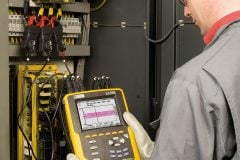



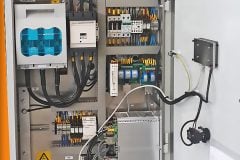

what limit value of THD of current for 440v system.
Thank you for a thorough explanation of THD. The video was especially helpful and we will use parts of it to show clients that are worried about their sensitive electronics.
I want newsletter